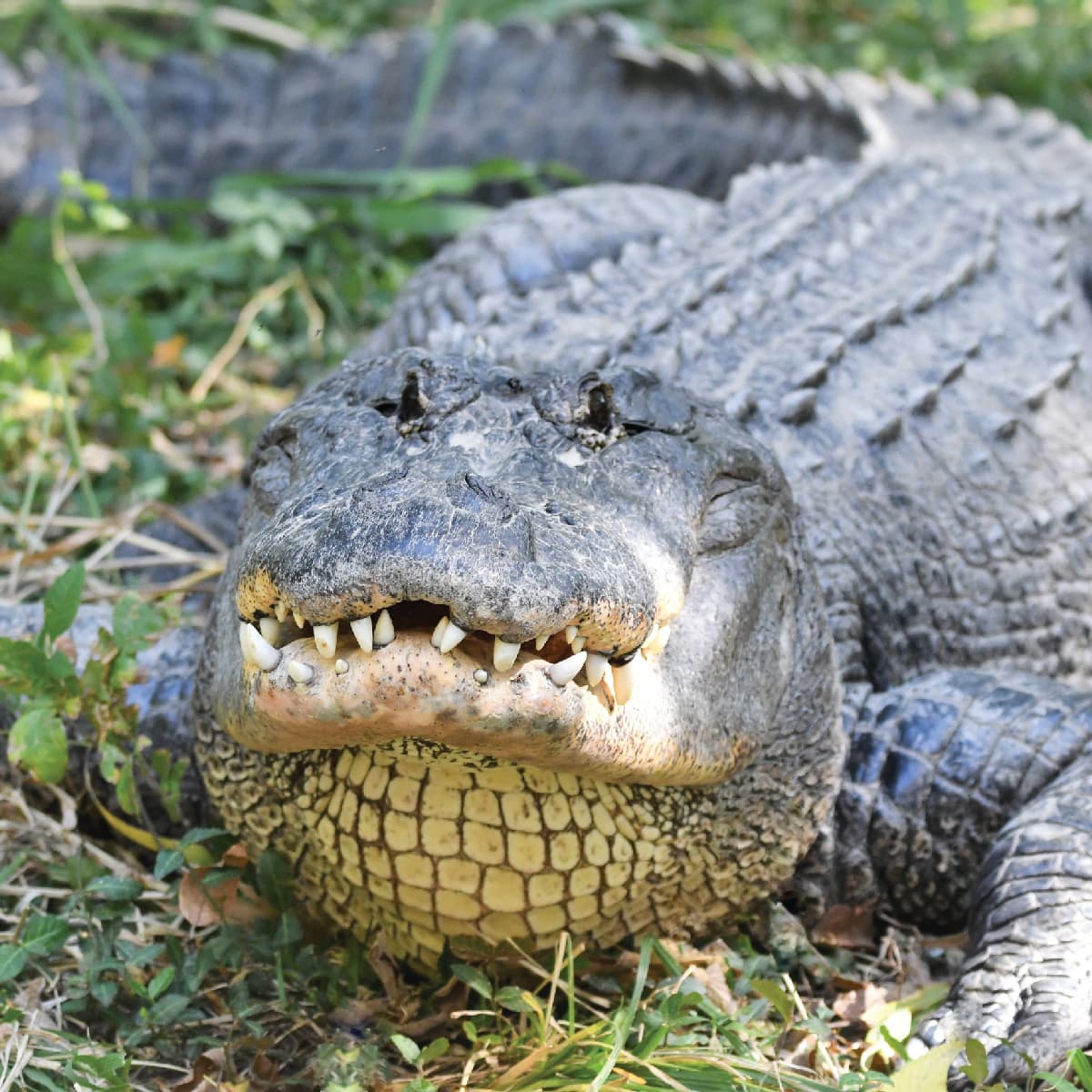
American Alligator
Alligator mississipiensis
Did you know?
- America alligators are part of the Alligatoridae family, which they share with other alligators and caiman.
- They live around freshwater-based habitats in the south and southeastern United States.
- The average male grows to about 11 feet (3.4 meters), while some become much longer.
- A female typically lays 35 to 50 eggs at one time.
- The sex of an egg is determined by temperature of its nest.
Adaptations
American alligators are highly successful carnivorous predators. They have protection through bony plates called osteoderms, which line their back. Their long bodies, powerful tails, and webbed feet make them powerful, agile and swift in water. Their snouts are upward facing, which allows them to breathe while nearly completely submerged. Their coloration provides ideal camouflage; In passing, they almost look like floating logs!
Young
Adult American alligators live alone. After mating season, which is typically in May, a female will build a nest and in June and July, she will lay a grouping of eggs. A female can lay up to 90 eggs at once. Eggs will incubate for about 65 days. Then, once they are old enough, young alligators will make noise from within their eggs, alerting the mother that it is time for her to remove any nesting materials from the top of the eggs. Hatchlings will live together for a time in groups called, “pods.”
Threat Level
- Unknown
- Common
- Near Threatened
- Threatened
- Endangered
- Critically Endangered
- Extinct in the Wild
Common
The American Alligator is widespread and abundant.
Range
Southeastern United States
Habitat
Rivers, lakes, ponds, swamps

We care about American alligators
The alligator is one of the success stories of U.S. wildlife conservation. It was hunted nearly to extinction for its skin, which was used to make purses, boots and other leather goods. But in 1967, this species was placed on the endangered species list, which banned hunting these reptiles. Alligators made an amazing comeback. Today, they are no longer endangered, and some states even allow them to be hunted again.
Learn more about how we are helping wildlife around the world.
Find this animal in Historic Hill

SAINT LOUIS ZOO ZONE
Historic Hill
Historic Hill is a lovely stroll through one of the oldest parts of the Saint Louis Zoo. From the 1904 World’s Fair Flight Cage to the Spanish architectural flavor of the 1920s in the Bird House, Primate House and Herpetarium to the finishing touches of our thoroughly modern exhibits, this area of the Zoo has a unique ambiance and a nostalgic history that make it a great destination.

